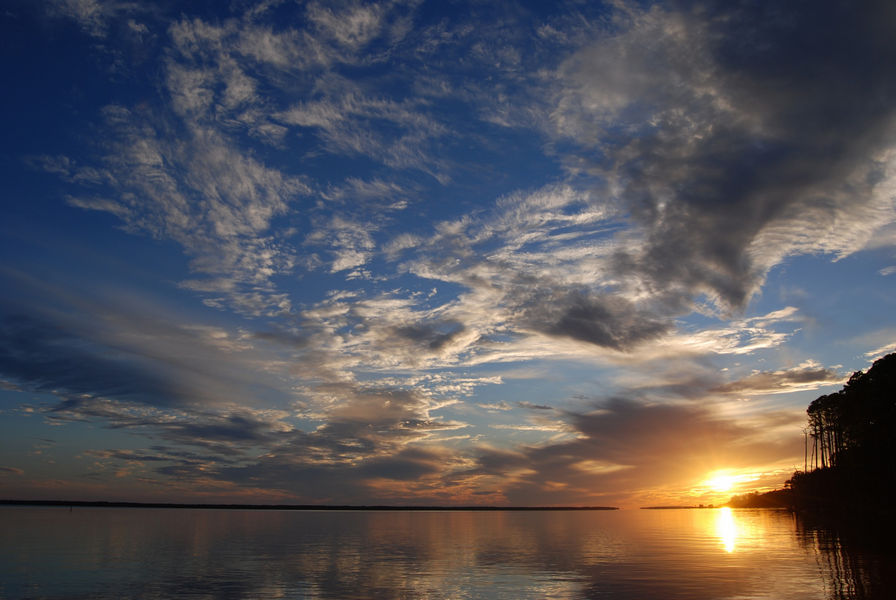Apalachicola National Estuarine Research Reserve (ANERR) has developed research priorities based on specific threats that currently confront ANERR and the Apalachicola River and Bay system. The two main threats to the bay system are the upstream diversion of fresh water and increasing local coastal development and land use changes. Developing a research plan for the ANERR represents an especially daunting task due to the size of the Apalachicola River and Bay as well as the diversity of species and habitats present. Therefore, it is especially important to promote research within and adjacent to ANERR by outside investigators from universities, government agencies and private institutions. Agencies, universities and institutions that have been heavily involved in research within or in cooperation with ANERR in the past five years include:
- Florida State University (FSU).
- Florida Agricultural & Mechanical University (Florida A&M or FAMU).
- NOAA Coastal Services Center.
- U.S. Fish and Wildlife Service.
- Florida Fish and Wildlife Conservation Commission (FWC).
- Northwest Florida Water Management District.
- U.S. Geological Survey.
- NERRS Science Collaborative.
- Florida Forest Service.
- Franklin County Board of County Commissioners and its Planning Office.
Water Quality Monitoring
Staff have maintained four dataloggers in the bay on a continuous basis since 1995. Every 15 minutes, they measure temperature, specific conductivity, salinity, dissolved oxygen, pH, water level and turbidity. They are located at Dry Bar, East Bay and Cat Point, approximately 1 foot above the bottom, with a second datalogger on the surface at the East Bay site. Weather can strongly influence water quality and is also monitored from a station in the upper East Bay marshes. Nutrient and chlorophyll a samples are collected monthly at each datalogger location plus nine additional sites.
Trawling
ANERR began a long-term trawling program in 2000 and now has more than a decade of monthly fish and benthic macro-invertebrate data at 12 sites. The sampling program mimics the gear and procedures of a long-term study done in the bay from 1972 to 1984 by an FSU researcher as well as having many of the same sampling locations incorporated into the project. Sixty trawls are performed monthly at these stations that have various habitat and salinity regimes associated with them (five at each site). Fish species and number are determined from each site along with water quality measurements.
Listed Species Monitoring - Sea Turtles
A long-term monitoring and management program for listed species has been in effect since the early 1990s. Sea turtle nests are monitored and protected on beaches within and adjacent to ANERR by staff, volunteers and other agencies, most of which is coordinated by ANERR. Management of the nests includes predator control, fencing nests, working with the county on a lighting ordinance, monitoring lighting violations, and working with a local nongovernmental organization on correcting lighting problems.
Listed Species Monitoring - Shorebirds
ANERR monitors and manages colonial migratory bird species including least terns, black skimmers, Caspian terns, royal terns, brown pelicans, gull-billed terns and sandwich terns on various human-made causeways and islands (both natural and human-made) within ANERR in association with FWC, Franklin County and U.S. Army Corps of Engineers.
Sentinel Site
Apalachicola NERR has water-level monitoring stations and is measuring the elevation of a marsh surface over time. Emergent vegetation transects are also being looked at to see the changes in species composition and density over an elevation change of a marsh. This is being done to see changes in the lower marsh plants as the sea level rises. Apalachicola is also part of the NOAA Sentinel Site Cooperative and a project monitoring the ecological effects of sea level rise in the northern Gulf of Mexico (along with Weeks Bay, Alabama, and Grand Bay, Mississippi).
Shoreline Monitoring
After Hurricane Opal hit in 1995, a shoreline erosion and dune recovery study was instituted to monitor changes in local shorelines, dune and vegetation loss and recovery as well as impacts from natural events such as hurricanes. The research section monitors beach and bay shorelines on Cape St. George Island at six locations quarterly to determine shoreline changes.
Oyster Growth and Spatfall Monitoring
Oyster growth and spatfall have been monitored monthly since March 2004 at two of the most productive oyster bars in the bay, Cat Point and Dry Bar. Differences in growth and spatfall can be compared to different environmental conditions on either side of the bay.
Seagrass Monitoring
A monitoring program to determine seagrass distribution and abundance was started in 2002. Survey methods have changed over the years to develop a more precise monitoring program, and ANERR is currently managing 10 fixed sites within the bay twice a year, at the beginning and end of the growing season. At each location, seagrass species are identified and the percent coverage of each species is determined. Blade lengths are measured and epiphyte coverage is classified as clean, light, medium or heavy.


